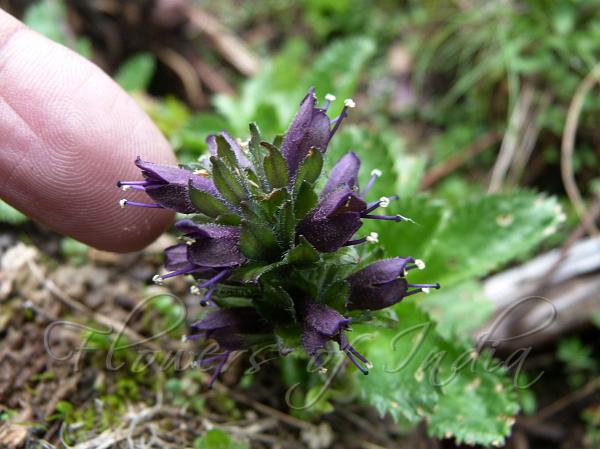|
| Figwort Bitter-Root |
|

|

| File size | 445238 |
| Original date | 6/20/13 10:59 AM |
| Resolution | 2048 x 1536 |
| Flash | Flash did not fire, auto |
| Focal length | 6.1mm |
| Exposure time | 1/60s |
| Aperture | 3.0 |
| Focus Distance | |
| Metering Mode | Multi-segment |
| Camera make | Panasonic |
| Camera model | DMC-FZ40 |
| Sensor type | OneChipColorArea |
|
|
|
|
Photo: |
Botanical name: Neopicrorhiza scrophulariiflora Family: Plantaginaceae (Isabgol family)
Synonyms: Picrorhiza scrophulariiflora
Synonyms: Picrorhiza scrophulariiflora
Figwort Bitter-Root is a perennial herb, 4-12 cm
tall. Rhizomes are up to 1 cm in diameter, coarsely rooting from nodes.
Leaf-stalks are short, leaves spoon-shaped to ovate, 3-6 cm, black when
dry, base tapering, margin toothed or rarely double toothed. Flowering
stem is brown glandular hairy. Flower spike 1-2 cm. Flower-stalks are
2-3 mm. Sepal cup is 4-6 mm, up to 1 cm in fruit, sepals lanceshaped to
obovate-oblong, upper sepal linear, brown glandular hairy. Flowers are
dark purple, 0.8-1 cm, outside velvety, tube 2-3 mm to 4-5 mm, lower
lip about 1/2 as long as upper, 3-lobed, lateral lobes with 2 or 3
small teeth. Upper lip is hooked, emarginate. Capsules are narrowly
ovoid, 8-10 mm. Figwort Bitter-Root is found in alpine grassland,
gravelly areas in the Himalayas, from Nepal to Bhutan, China, NE India,
Myanmar, at altitudes of 3500-4800 m. Flowering: July-August.
Medicinal uses:  Rhizomes and roots are used to treat high blood pressure, fever, bile
and other intestinal pains and cold and sore throats.
Rhizomes and roots are used to treat high blood pressure, fever, bile
and other intestinal pains and cold and sore throats.
 Rhizomes and roots are used to treat high blood pressure, fever, bile
and other intestinal pains and cold and sore throats.
Rhizomes and roots are used to treat high blood pressure, fever, bile
and other intestinal pains and cold and sore throats. | Identification credit: D.S. Rawat | Photographed in Tawang distt, Arunachal Pradesh. |
• Is this flower misidentified? If yes,